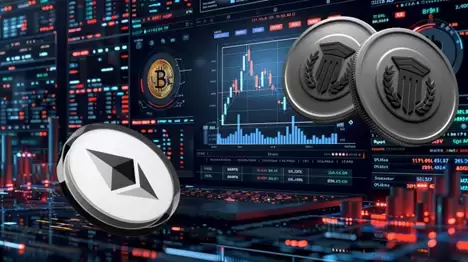 |
|
 |
|
 |
|
 |
|
 |
|
 |
|
 |
|
 |
|
 |
|
 |
|
 |
|
 |
|
 |
|
 |
|
 |
|
Ever sent tokens to an address, only to find you were supposed to interact with a contract instead? We've all been there. The Ethereum blockchain is packed with smart contracts.

Ever sent tokens to an address, only to find you were supposed to interact with a contract instead? We’ve all been there. The Ethereum blockchain is packed with smart contracts. These are tiny programs that live on-chain and power everything from DeFi to NFTs.
Each of these contracts is anchored by a unique contract address. If you’ve ever wondered what makes these addresses special and how to find them, this guide is for you.
Ethereum contract addresses are the backbone of every app, swap, and token you use on Ethereum. I’ll explain why they’re important and how to find them.
Key highlights:
What is an Ethereum contract address?
Every time you interact with a decentralized app or token on Ethereum, there’s a contract address behind the curtain. Unlike ordinary wallet addresses (where you simply store funds, such as with a Bitcoin address), contract addresses represent smart contracts. They are bundles of code that govern everything from swaps to NFT sales.
Contract addresses look just like regular Ethereum addresses: 42 characters, starting with “0x.” The difference? Sending tokens to a wallet address sends them to a person; sending to a contract address triggers programmatic logic, like swapping tokens, minting NFTs, or onboarding into a DeFi protocol.
Understanding Ethereum contract addresses
Let’s get technical (just for a second). Contract addresses aren’t chosen at random. They’re created when someone deploys a new contract to the Ethereum network. The network generates the contract address from the creator’s address and their transaction count. It’s deterministic, which means that no human points and picks, which means no easy-to-guess vanity contracts.
Once deployed, a contract address becomes a public, permanent part of the blockchain. Every time a DApp or token project rolls out, its contract address is etched on-chain, always accessible and impossible to change.
Difference between wallet addresses and contract addresses
Both live side-by-side on the blockchain, but their behavior is night and day. Accidentally sending ETH to a contract designed only for tokens? That ETH might be gone for good.
Why contract addresses are important in smart contracts
Every major Ethereum project, like Uniswap, Aave, or even Polygon, publishes its contract address. This isn’t a technical quirk. It’s practical. Users, apps, and other contracts need to know where to send data, tokens, or requests.
Contract addresses fuel:
Without these addresses, none of the automation or security of smart contracts would be possible. The address is the smart contract’s identity.
How to find an Ethereum contract address
You wouldn’t send cash without double-checking the account number, right? The same goes for smart contract addresses. Here’s how you can confidently spot and verify the right Ethereum contract address, step by step.
Using Blockchain Explorers (e.g., Etherscan and Ethplorer)
Most reputable projects publish their contract address directly on their official website or social media. But to be 100% sure (and see live data), use a blockchain explorer:
Etherscan
EthplorerBoth tools let you see contract details, creator, token holders, and even source code.
Always cross-check with a project’s official channels. Don’t just trust the first search result. A typo or fake token lives forever.
Ensuring address authenticity and security
Before you interact with any contract, check one thing: the address format. Ethereum uses something called a checksum. This is a mix of uppercase and lowercase letters to help catch typos. If an address looks off (all lowercase, no caps in sight), it might not be safe. And never copy-paste blindly from forums or Twitter replies.
Here’s a quick checklist for staying safe:
The bottom line
Ethereum contract addresses aren’t just strings of numbers and letters. Well, they are, but they’re important. They’re gateways that connect users to smart contracts that drive DeFi, NFTs, DAOs, and everything decentralized.
If you know what a contract address does, how it’s created, and how to find (and verify) the right one, it’ll help keep your funds safe and your transactions successful.
We’ve explored the technicalities of Ethereum contract addresses, but how about ETH’s financial analysis? To see where Ethereum could go in the future, check out our article covering Ethereum’s price prediction for 2040 & 2050.
Disclaimer:info@kdj.com
The information provided is not trading advice. kdj.com does not assume any responsibility for any investments made based on the information provided in this article. Cryptocurrencies are highly volatile and it is highly recommended that you invest with caution after thorough research!
If you believe that the content used on this website infringes your copyright, please contact us immediately (info@kdj.com) and we will delete it promptly.




























































